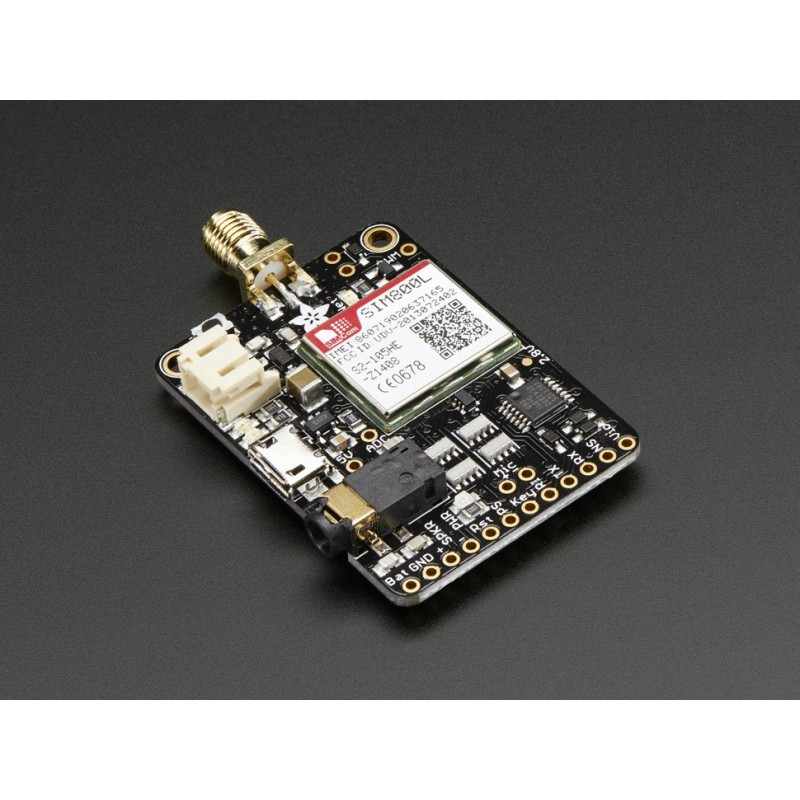Ring, Ring! Who's that callin'? It's your breadboard! Introducing Adafruit FONA MiniGSM, an adorable all-in-one cellular phone module that lets you add voice, text, SMS and data to your project in an adorable little package.
This module measures only 1.75""x1.25"" but packs a surprising amount of technology into it's little frame. At the heart is a GSM cellular module (we use the latest SIM800) the size of a postage stamp. This module can do just about everything. This version has an SMA connector. For the uFL version, click here!
- Quad-band 850/900/1800/1900MHz - connect onto any global GSM network with any 2G SIM (in the USA, T-Mobile is suggested)
- Make and receive voice calls using a headset OR an external 8? speaker + electret microphone
- Send and receive SMS messages
- Send and receive GPRS data (TCP/IP, HTTP, etc.)
- Scan and receive FM radio broadcasts (yeah, we don't exactly know why this was included but it works really well)
- PWM/Buzzer vibrational motor control
- AT command interface with ""auto baud"" detection
Sounds delicious, right? So we plated this fine module onto a little breakout with all the extras you need to make your next project shine
- Onboard LiPoly battery charging circuitry so you can take your project on the go. Use any 500mAh+ LiPoly or LiIon battery and recharge over the MicroUSB when necessary. Two LEDs let you know when its charging and done
- Standard 4-pole TRRS headphone jack. Use any 'Android' or 'iPhone'-compatible headset with mic
- Breakouts for external 8? speaker and electret mic if you don't want to use a headphone
- Level shifting circuitry so you can run it with 2.8V to 5V logic.
- Vibrational motor (buzzer) driver so you can have noiseless notifications
- SMA connection for external antenna
- Indicator LEDs for power and network connectivity
- Standard SIM slides into the back
This is our Release Candidate for hackers and advanced makers. We're still adding library support for all the various things the FONA can do but there may be updates as FONA is used around the world!
On its own, this module can't do anything. It requires a microcontroller to drive it! We suggest and use an Arduino but any 3-5V microcontroller with a UART can send and receive commands over the RX/TX pins.
You will also need some required accessories to make FONA work. These are not included!
- SIM Card! A 2G Mini SIM card is required to do anything on the cellular network. US AT&T no longer sells 2G SIMs and will shut off their 2G network, so for American customers we recommend any T-Mobile or reseller (SIMPLE mobile, etc) that uses the T-Mobile network.
- Lipoly Battery - 500mAh or larger! This 500mAh battery, or this 1200mAh will work great.
- MicroUSB cable for charging the battery.
- External Antenna - this straight one or this right-angle one will work well.
There's also some recommended accessories. They are not required but chances are you'll want them!
Technical Details
Datasheets:
Learn
Call phones, send and receive SMSs, & more! All with FONA
Connect your Linux board to the internet through a cellular data connection with FONA!
"



